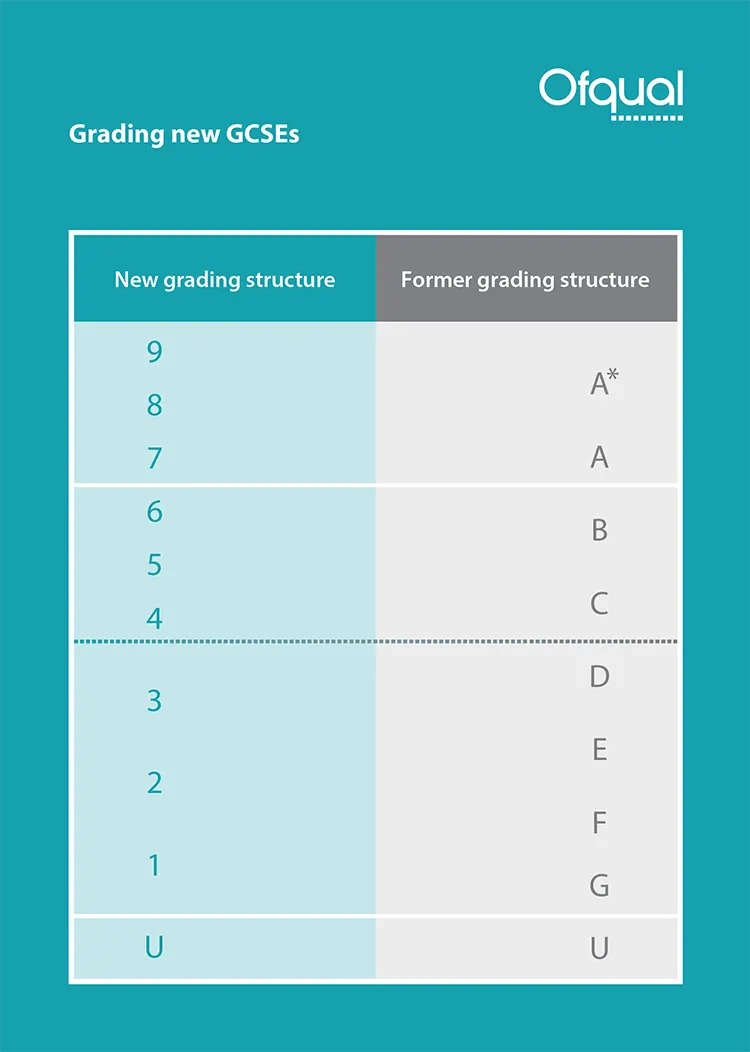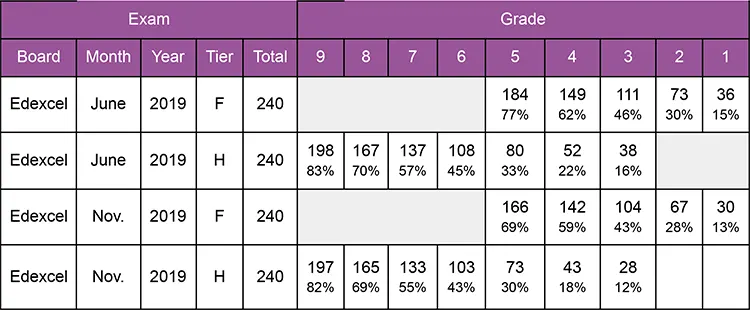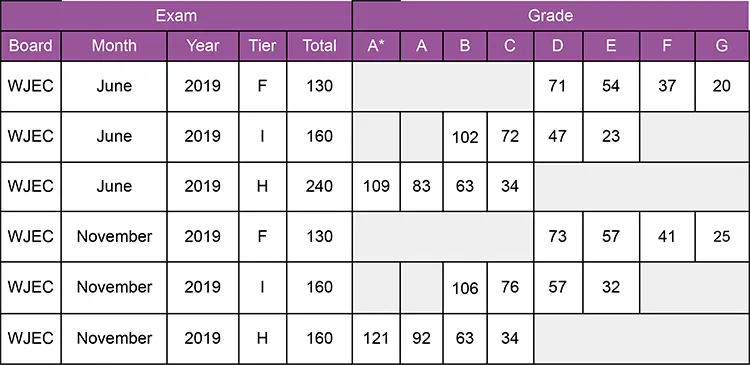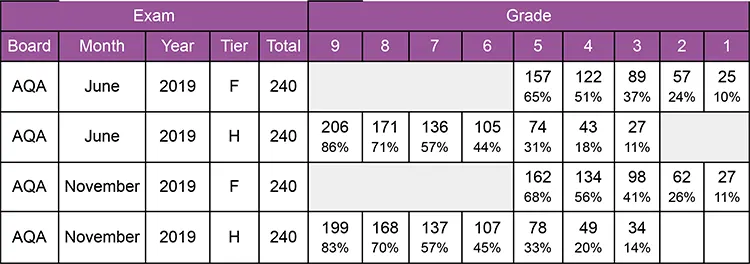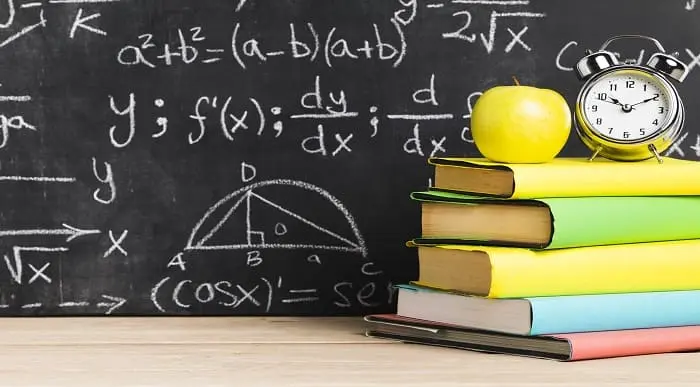GCSE
GCSE Maths Grade Boundaries for All Boards – [2019 to 2023]
In 2017, GCSE Maths grade boundaries, including English and Science, switched from A* to U to the numerical system of 9 –1. Grade boundaries for maths play an important effect in GCSE results across all exam boards. A minor shift in these boundaries, for example, might result in a poorer mark for a student. However, it may even assist you in improving your grade.
The grade boundaries are set by the five major exam boards in the United Kingdom. They are–
- AQA,
- Edexcel,
- OCR (Oxford, Cambridge, and RSA),
- WJEC (Welsh Joint Education Committee)
- CCEA
We have comprehensively presented the GCSE Maths grade boundaries for all these boards.
Let’s look through this article thoroughly to find out what grade you would have gotten on the papers based on raw marks if you had taken the examinations or to have a clear knowledge of the the general grading system of mathematics so that you can overcome the first stage of GCSE Maths phobia.
You can download the pdf** version of the comparison chart of the old and new GCSE grade boundaries here and read our other blog to learn why GCSE Grade Boundaries were modified and why they get released on results day in detail as well as how to calculate your grade using GCSE grade boundaries.
Table of Content
How are GCSE Maths Marks Distributed in Test Papers?
There are two tiers for those unfamiliar with the specifics of GCSE maths:
- Foundation Tier
- Higher Tier
Since 2017, Ofqual has imposed additional requirements on examination boards to keep papers and, consequently, GCSE Maths grades consistent. The foundation papers for each topic are scored 5-1, whereas the higher papers are graded 9-3. If a student falls below the grade threshold of a level 3 on a higher paper, they will receive a U, which stands for unclassified.
| In a higher tier paper, half marks should be fixed at grades 9, 8, and 7, while the other half should be fixed at grades 6, 5, and 4. |
| In a foundation tier paper, half marks should be targeted towards grades 5, 4, and the top of grade 3, while the other half should be fixed at the bottom of grade 3 and grades 2 and 1. |
Now, Let’s find out the grade boundaries for GCSE Maths examining bodies. Both WJEC and CCEA do not use the newer numerical grading system.
GCSE Maths Grade Boundaries for All Boards – [2019 to 2023]
All the past grade boundaries for the 9-1 GCSE mathematics 2019 exam
Board: Edexcel Year: 2019 Month: June & November Tier: Foundation & Higher
Board: OCR Year: 2019 Month: June & November Tier: Foundation & Higher
Board: WJEC Year: 2019 Month: June & November Tier: Foundation, Intermediate & Higher
Linear Grade Points
Board: AQA Year: 2019 Month: June & November Tier: Foundation & Higher
All the past grade boundaries for the 9-1 GCSE Mathematics 2020 exam
Board: Edexcel Year: 2020 Month: November Tier: Foundation & Higher
Board: OCR Year: 2020 Month: November Tier: Foundation & Higher
Board: WJEC Year: 2020 Month: November Tier: Foundation, Intermediate & Higher
Linear Grade Points
Board: AQA Year: 2020 Month: November Tier: Foundation & Higher
All the past grade boundaries for the 9-1 GCSE mathematics 2021 exam
Board: Edexcel Year: 2021 Month: November Tier: Foundation & Higher
Board: OCR Year: 2021 Month: November Tier: Foundation & Higher
Board: WJEC Year: 2021 Month: November Tier: Foundation, Intermediate & Higher
Linear Grade Points
Board: AQA Year: 2021 Month: November Tier: Foundation & Higher
All the past grade boundaries for the 9-1 GCSE mathematics 2022 exam
Board: Edexcel Year: 2022 Month: June Tier: Foundation & Higher
Board: OCR Year: 2022 Month: June Tier: Foundation & Higher
Board: WJEC Year: 2022 Month: June Tier: Foundation, Intermediate & Higher
Linear Grade Points
Board: AQA Year: 2022 Month: June Tier: Foundation & Higher
For convenience, we have also included links to the Council for the Curriculum, Examinations & Assessment board (CCEA) GCSE maths grade boundaries below.
- GCSE Mathematics Summer 2019 – CCEA
- GCSE Mathematics Spring 2020 – CCEA
- Uniform Mark Boundaries (Summer 2022) – CCEA
FAQ
Is a Grade ‘5’ good in Maths?
According to BBC News, A ‘4’ is considered a standard pass, broadly equivalent to a grade C, whereas a ‘5’ is regarded as a strong pass. The government’s school league tables are based on the percentage of students who obtain a ‘5’ or above in English and Maths GCSEs.
What is Further Maths at GCSE?
Further Mathematics is a GCSE subject designed for students who want to study beyond the Higher Tier GCSE syllabus in Mathematics and can work at a higher level.
What percentage is a 7 in GCSE maths?
Grade 7 under the former system meant receiving a lower grade A. A student who receives a grade of 7 (lower A) must have achieved between 70 and 82 percent on their exam papers. According to the GCSE 2022 grade boundaries, a grade of 7 is considered a good score.
Conclusion
Achieving higher maths grades in GCSE exams significantly impacts your further education life and career. That is why having a good idea of the GCSE Maths Grade Boundaries (9-1) for all boards is essential. This knowledge will help those aiming for a level 4 or 5 in Maths decide which paper, foundation or higher, or exam board to pick. As a result, you should conduct extensive research before making a decision.
What to Read Next:
- Essential Functional Skills Booklist for Study and Practice
- Triangles ABC and CDE are Mathematically Similar?
- GCSE Exam Centres
- What is Functional Skills Qualification? All You Need to Know About This
- How to Become a Functional Skills Teacher – Step by Step Guide
- What are GCSEs? Everything you need to know
- IGCSE vs GCSE: What are the Differences & Which is Harder?


